If you want to enjoy miso soup with salmon, Ishikari Jiru is the perfect choice. The flavors of salmon and vegetables blend with miso, offering a distinctive taste that sets it apart from regular miso soup.

Jump to:
What is Ishikari Jiru?
Ishikari Jiru is a hearty soup made by simmering salmon fillets with vegetables in kombu dashi, then dissolving miso into it. "Ishikari" refers to the Ishikari region in Hokkaido, the northernmost part of Japan, and "Jiru" means soup. It is often topped with butter for extra richness.
As the name suggests, this dish originates from the Ishikari region, which is known for its salmon fishing. Its simple yet delightful combination of salmon and miso has made it popular throughout Japan. It is a comforting and nourishing dish, packed with vegetables, protein, and carbohydrates.

How to reduce any fishy odor from salmon
The key to making this dish delicious is properly reducing any fishy odor from the salmon. By preparing it carefully, the flavor of the soup becomes much more refined. In Japan, the following methods are commonly used:
- Sprinkle sake over the salmon fillets and let them sit for about 5 minutes.
- Evenly sprinkle salt, about 2% of the salmon’s weight, on both sides of the fillets, then refrigerate them for a few hours to draw out excess moisture. After that, pat them thoroughly dry.
- Make a cross-shaped incision in the fillets, blanch them briefly for 5-10 seconds, and then cool them immediately in ice water.
In this recipe, I'm sharing the easiest and quickest method: sprinkling sake over the salmon fillets. However, if you are still concerned about any residual odor, you can also combine it with the other methods for better results.
Common ingredients and flavor variations
Ishikari Jiru originally comes from the Ishikari region in Hokkaido, so it is customary to use vegetables that are readily available there. Common vegetables include carrots, potatoes, green cabbage, naganegi (Japanese leeks), onions, daikon radish, and corn.
In addition to these, ingredients such as mushrooms, tofu, aburaage (fried tofu pouches), and konjac are sometimes added. Since this soup highlights the rich flavors of salmon and miso, it can accommodate a wider variety of ingredients than regular miso soup.
The flavors of the salmon and vegetables alone are enough to make a delicious soup, but adding butter or sansho (Japanese pepper) can further enhance the dish's flavor. Feel free to try these additions to enjoy different variations that suit your taste.

📋Step-by-step recipe
Ingredients
- 1 salmon fillet (about 3.2 oz/90 g)
- 1 Tbsp sake (for the salmon fillet)
- 3.5 oz potato
- 1.8 oz carrot
- 3.5 oz Japanese leek (naganegi) (can be substituted with regular leek)
- 3.5 oz green cabbage
- 1 Tbsp sake
- 2 Tbsp miso
Kombu dashi:
- 2 cups water
- 0.2 oz kombu (dried kelp)
Topping (optional):
- 2 tsp butter (0.2 oz/5 g per 1 tsp)
Instructions
🕒 Total: 55 minsIf you already have kombu dashi, start from step 3. In that case, use 2 cups (500 ml) of your dashi for 2 servings.
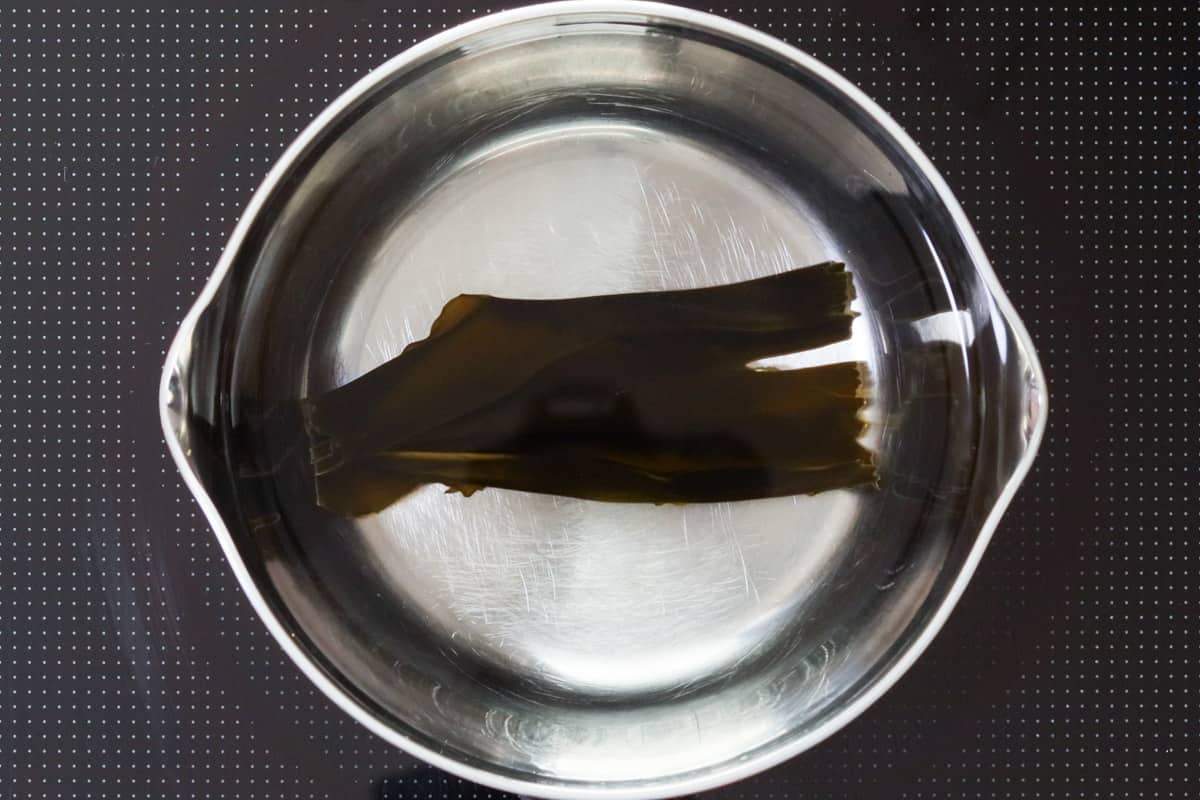
Step 1
Put water and kombu in a pot and let it sit for at least 30 minutes until the kombu softens.
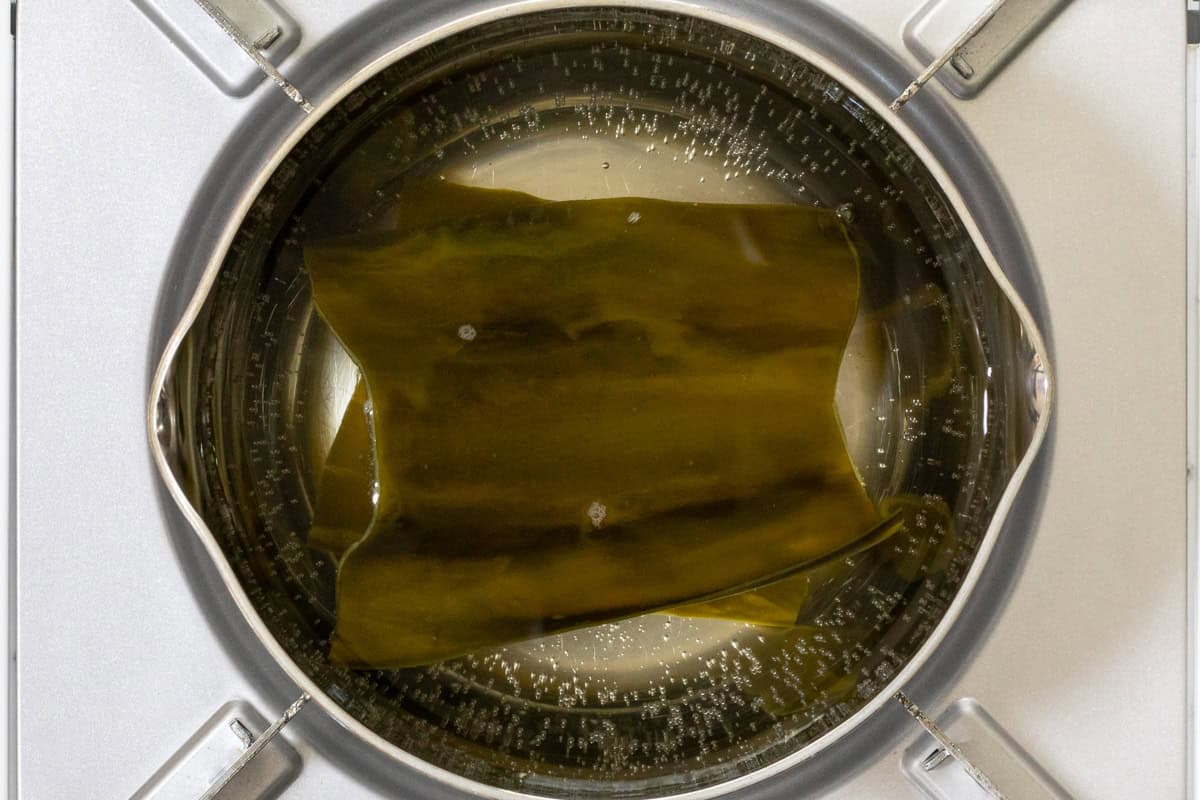
Step 2
Heat the pot over very low heat for about 10 minutes or longer. When small bubbles start to appear on the surface, remove the kombu. Kombu dashi is ready.
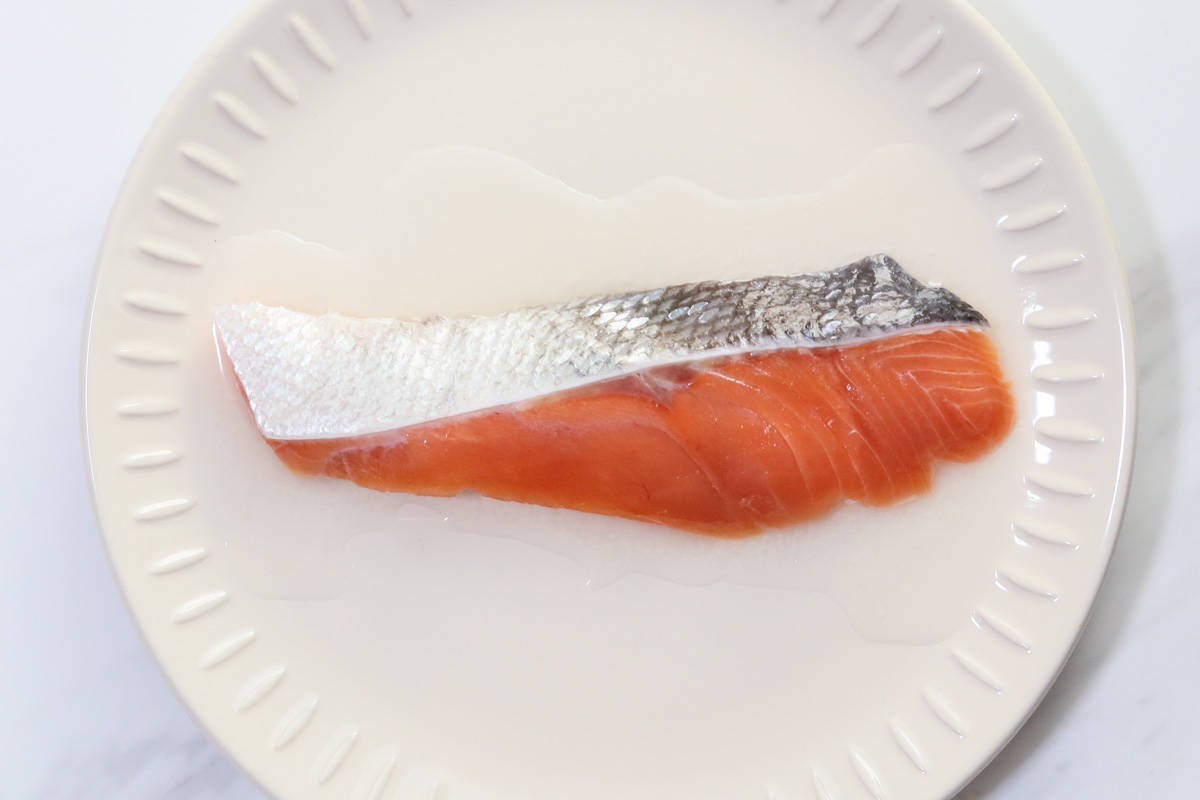
Step 3
Sprinkle sake over the salmon fillet and let it sit for about 5 minutes to reduce any fishy odor.
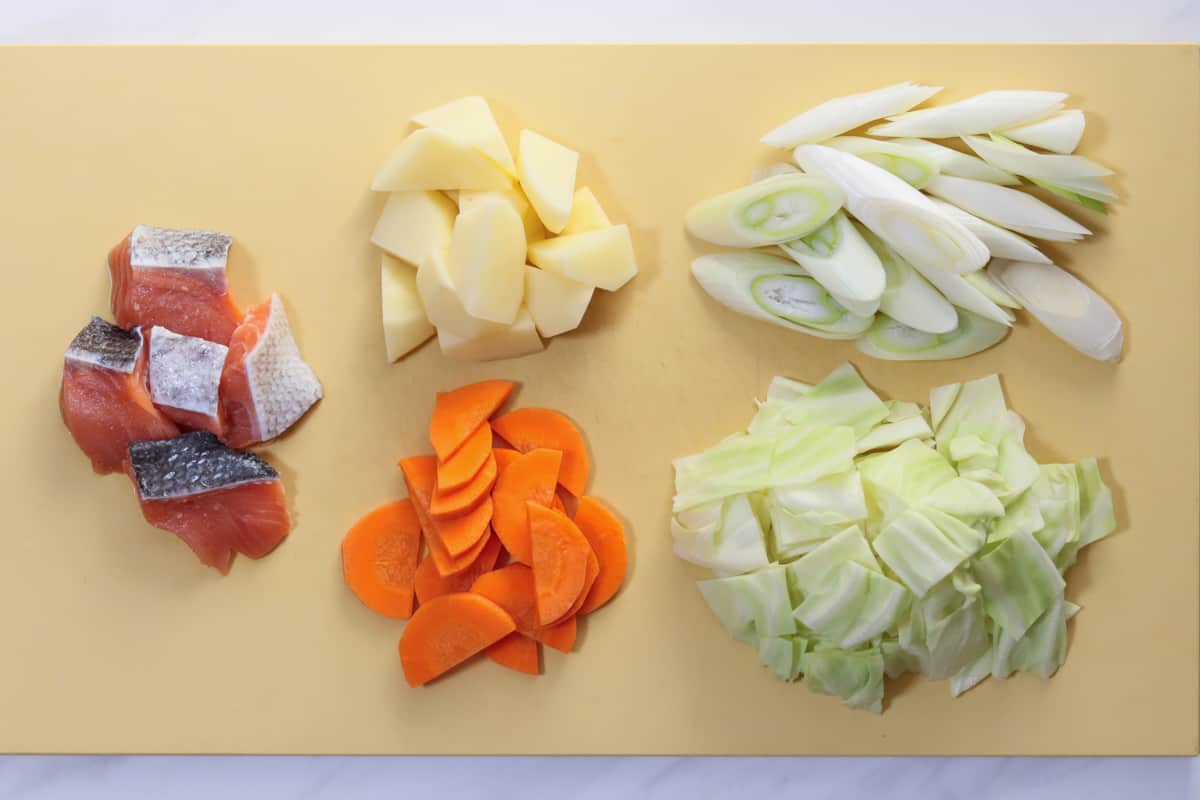
Step 4
Remove any scales from the fillet, then cut it into bite-sized pieces. Cut the potato, carrot, Japanese leek, and cabbage into bite-sized pieces as well.
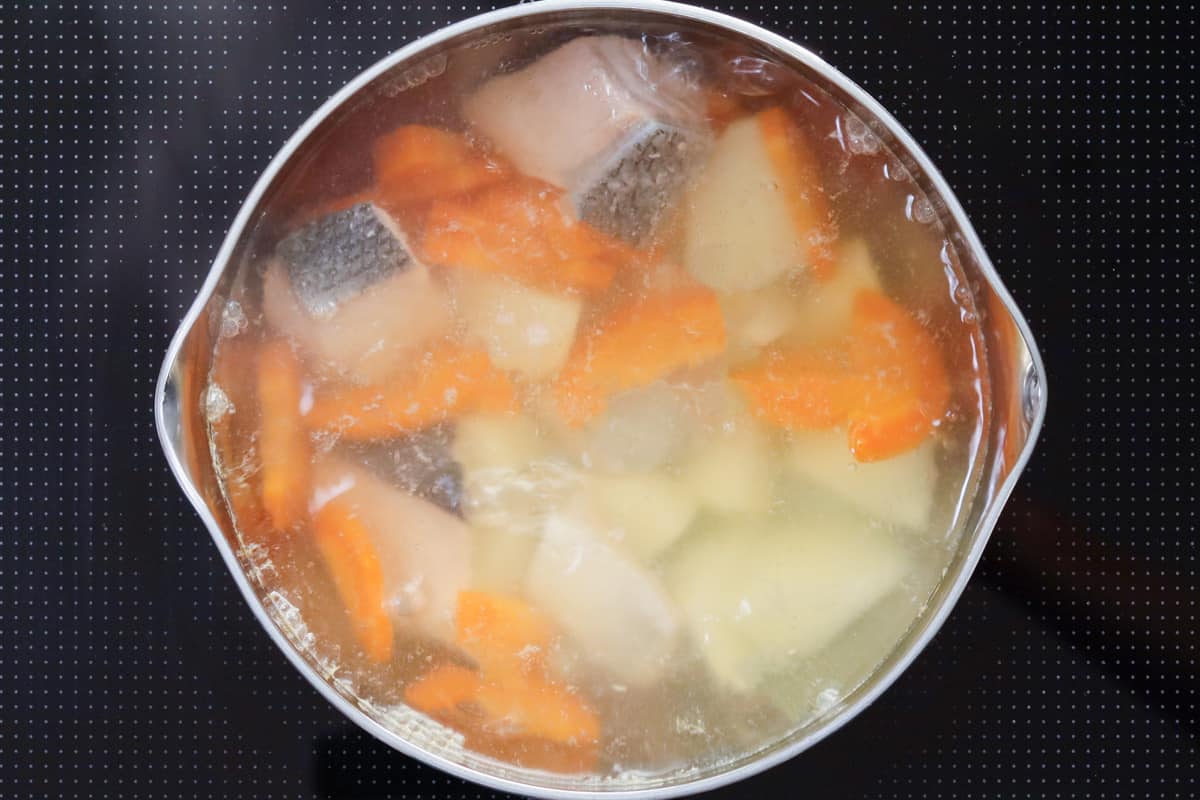
Step 5
Bring the kombu dashi in the pot to a boil, then add the salmon, carrot, and potato. Reduce the heat to low and simmer for about 10 minutes until tender, skimming off any scum.

Step 6
Add the leek, cabbage, and sake to the pot and continue simmering for a few more minutes. Turn off the heat, then dissolve the miso using a ladle and chopsticks.

Step 7
Serve in bowls and top with butter to taste.
To store
You can store it in the refrigerator for up to 2 days.
Cooking tips
A simple yet important tip for making delicious miso soup is to add miso last and avoid heating it afterward. If the miso is heated after being added, its flavor and beneficial bacteria may be diminished.
Therefore, I recommend enjoying the soup immediately after it is made. If reheating is necessary, do so gently, just enough to prevent it from boiling.

If you try this recipe, I’d love to hear what you think. Please consider leaving a review and star rating in the comments below. If you enjoyed it, I’d really appreciate it if you shared it with your friends.
More miso soup recipes you'll love
Recipe card

Ishikari Jiru (Japanese Salmon Miso Soup)
Ingredients
- 1 salmon fillet (about 3.2 oz/90 g)
- 1 Tbsp sake (for the salmon fillet)
- 3.5 oz potato
- 1.8 oz carrot
- 3.5 oz Japanese leek (naganegi) (can be substituted with regular leek)
- 3.5 oz green cabbage
- 1 Tbsp sake
- 2 Tbsp miso
Kombu dashi:
- 2 cups water
- 0.2 oz kombu (dried kelp)
Topping (optional):
- 2 tsp butter (0.2 oz/5 g per 1 tsp)
Instructions
- Put water and kombu in a pot and let it sit for at least 30 minutes until the kombu softens.
- Heat the pot over very low heat for about 10 minutes or longer. When small bubbles start to appear on the surface, remove the kombu. Kombu dashi is ready.
- Sprinkle sake over the salmon fillet and let it sit for about 5 minutes to reduce any fishy odor.
- Remove any scales from the fillet, then cut it into bite-sized pieces. Cut the potato, carrot, Japanese leek, and cabbage into bite-sized pieces as well.
- Bring the kombu dashi in the pot to a boil, then add the salmon, carrot, and potato. Reduce the heat to low and simmer for about 10 minutes until tender, skimming off any scum.
- Add the leek, cabbage, and sake to the pot and continue simmering for a few more minutes. Turn off the heat, then dissolve the miso using a ladle and chopsticks.
- Serve in bowls and top with butter to taste.
Notes
- If you already have kombu dashi, start from step 3. In that case, use 2 cups (500 ml) of your dashi for 2 servings.
- You can store it in the refrigerator for up to 2 days.

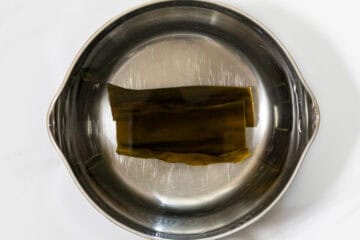
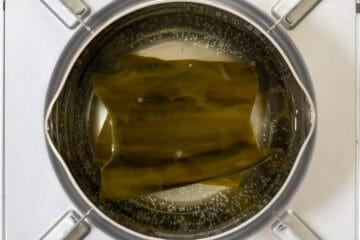

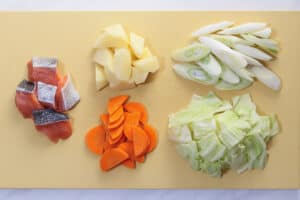

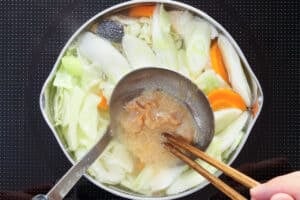



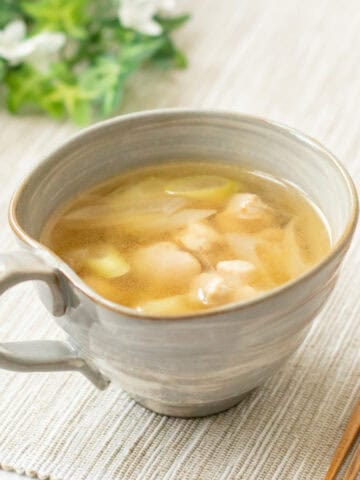

Leave a Rating and a Comment